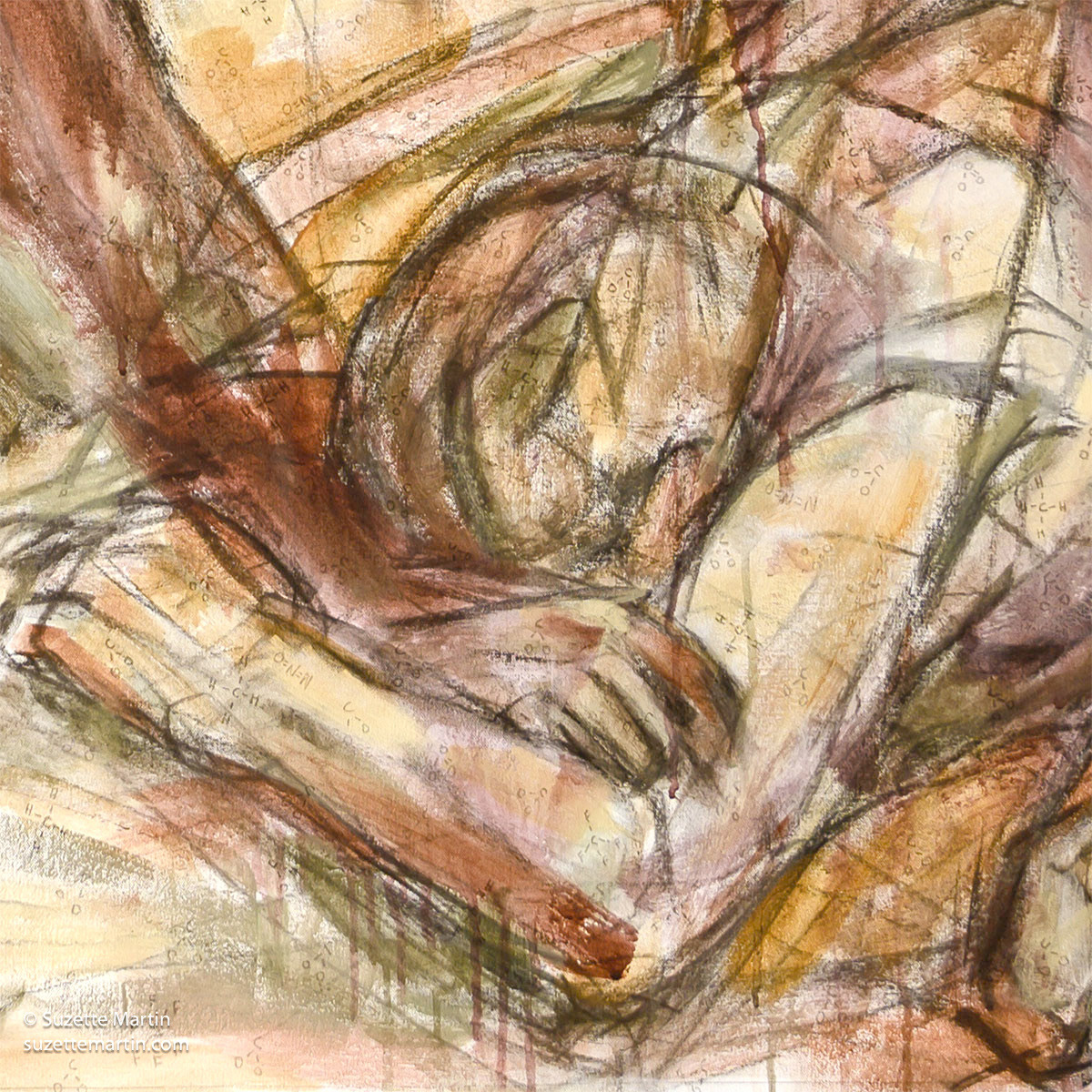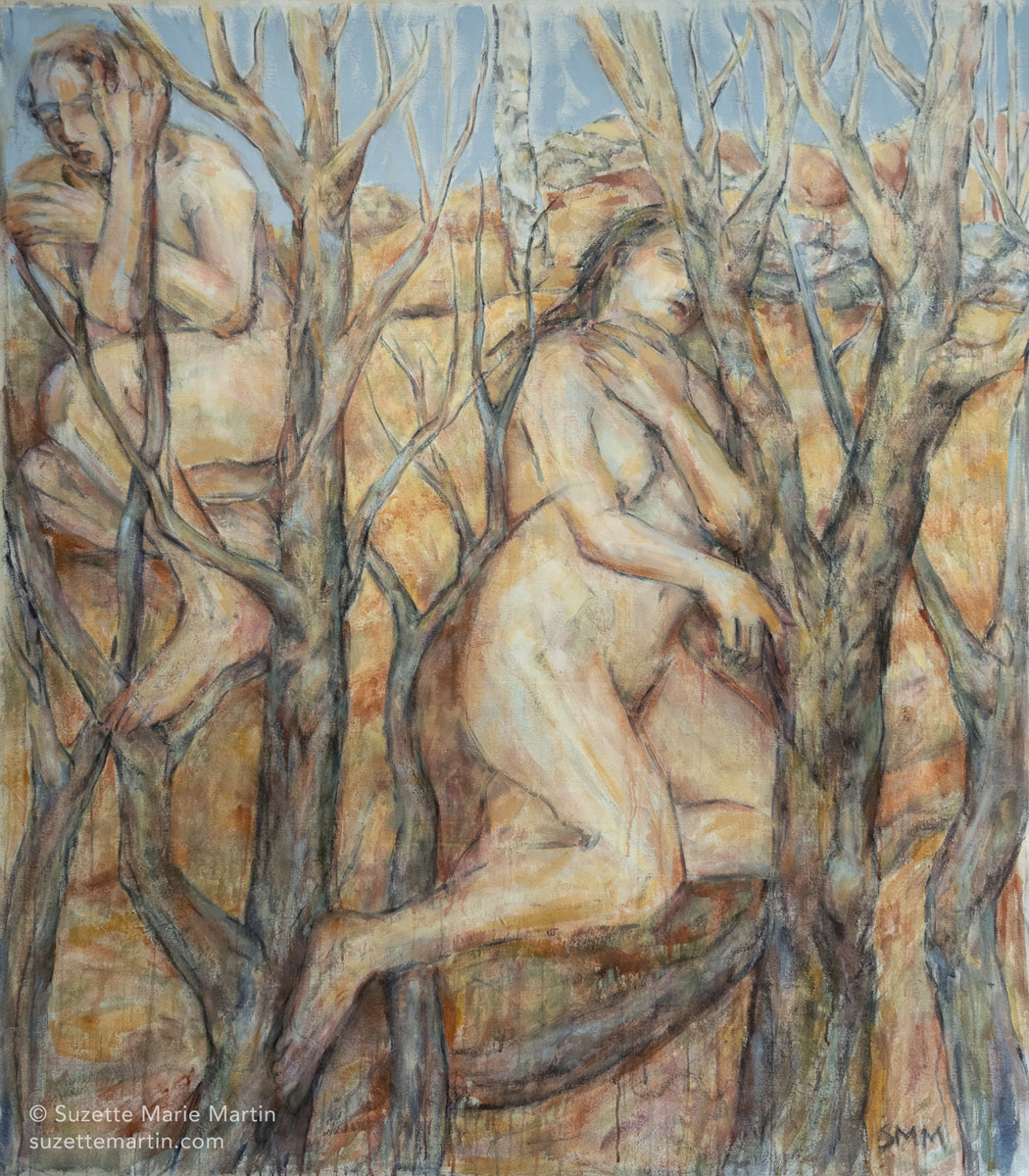
Dryad of Climate Departure (Winter, No Snow) 84” H x 64” W

Detail: Dryad of Climate Departure (Winter, No Snow)
Dryad of Climate Departure (Winter, No Snow) Climate departure is the point at which the average temperature of a location's coldest year is projected to be warmer than the average temperature of its hottest year in the baseline period 1860-2005. Heat, drought, and loss of seasonal temperature fluctuations destroy trees, with cascading disappearance of the plants, animals, insects and microorganisms dependent on forest ecology. This Dryad sits in a gray and leafless deciduous forest, devoid of living creatures or snow cover.

Dryad of the King's Pines, 84" H x 84" W. Studio view, 2021

Dryad of the King's Pines, detail
Dryad of the King’s Pines is based on America's history of colonialism and natural resource extraction for political and economic dominance. In the 1750’s, King George I of England claimed exclusive rights to the enormous Pinus Strobus in the New England colonies for ship building of the Royal Navy fleet. “The Pine Tree Riots” of 1772, a rebellion by New Hampshire settlers who also claimed rights to the timber, was a precursor to the American Revolution. Pinus Strobus, with a recorded life span of 400+ years, is currently grown as a monoculture crop in timber production forests, and harvested around 30 years growth. This painting features a representation of full-scale section of a 400 year-old Eastern White Pine.

Requiem, Dryads of the Anthropocene. 84” H x 84” W

Detail: Requiem, Dryads of the Anthropocene.
Requiem, Dryads of the Anthropocene
Dryads, the spiritual embodiment of trees, groves, woodlands and mountain forests in Ancient Greek mythology, were believed to die along with the trees they inhabited. This trio of dryads, engulfed in the molecular symbols of greenhouse gases, stand watch over a compromised landscape of spindly, young trees they can neither bless nor protect from destructive human activities.
Dryads, the spiritual embodiment of trees, groves, woodlands and mountain forests in Ancient Greek mythology, were believed to die along with the trees they inhabited. This trio of dryads, engulfed in the molecular symbols of greenhouse gases, stand watch over a compromised landscape of spindly, young trees they can neither bless nor protect from destructive human activities.

Dryad of Post-Industrial Collapse (New England) 63” H x 84” W

Dryad of Post-Industrial Collapse (New England) detail
Dryad of Post-Industrial Collapse (New England)
The title references not only the gesture of the figure, collapsed in sparse second-growth woodlands, but the collapsed economy of a region whose former industrial base contributed to the escalation of greenhouse gas emissions, and left behind polluted mill towns, widespread poverty and addiction crises when manufacturing left the region.
The title references not only the gesture of the figure, collapsed in sparse second-growth woodlands, but the collapsed economy of a region whose former industrial base contributed to the escalation of greenhouse gas emissions, and left behind polluted mill towns, widespread poverty and addiction crises when manufacturing left the region.

Dryads of the Anthropocene (Daughters of the American Revolution) 81"H x 72"W

Detail: Dryads of the Anthropocene,(Daughters of the American Revolution)

Detail: Dryads of the Anthropocene,(Daughters of the American Revolution)
Dryads of the Anthropocene (Daughters of the American Revolution)
The artist's New England ancestors return as dryads, adrift in fragmented woodlands on former colonial pastures. These dreaming spirits, with visible bones and translucent skin, passively float among sparse second-growth trees, in a woodland edged with stone wall boundaries built by colonial settlers. The eradication of indigenous cultures, whose traditional relationships with the landscape left minimal changes, and the extensive environmental disruptions that began during European settlement of the "New World" have historic consequences that collide across time with current ecological crises.
The artist's New England ancestors return as dryads, adrift in fragmented woodlands on former colonial pastures. These dreaming spirits, with visible bones and translucent skin, passively float among sparse second-growth trees, in a woodland edged with stone wall boundaries built by colonial settlers. The eradication of indigenous cultures, whose traditional relationships with the landscape left minimal changes, and the extensive environmental disruptions that began during European settlement of the "New World" have historic consequences that collide across time with current ecological crises.